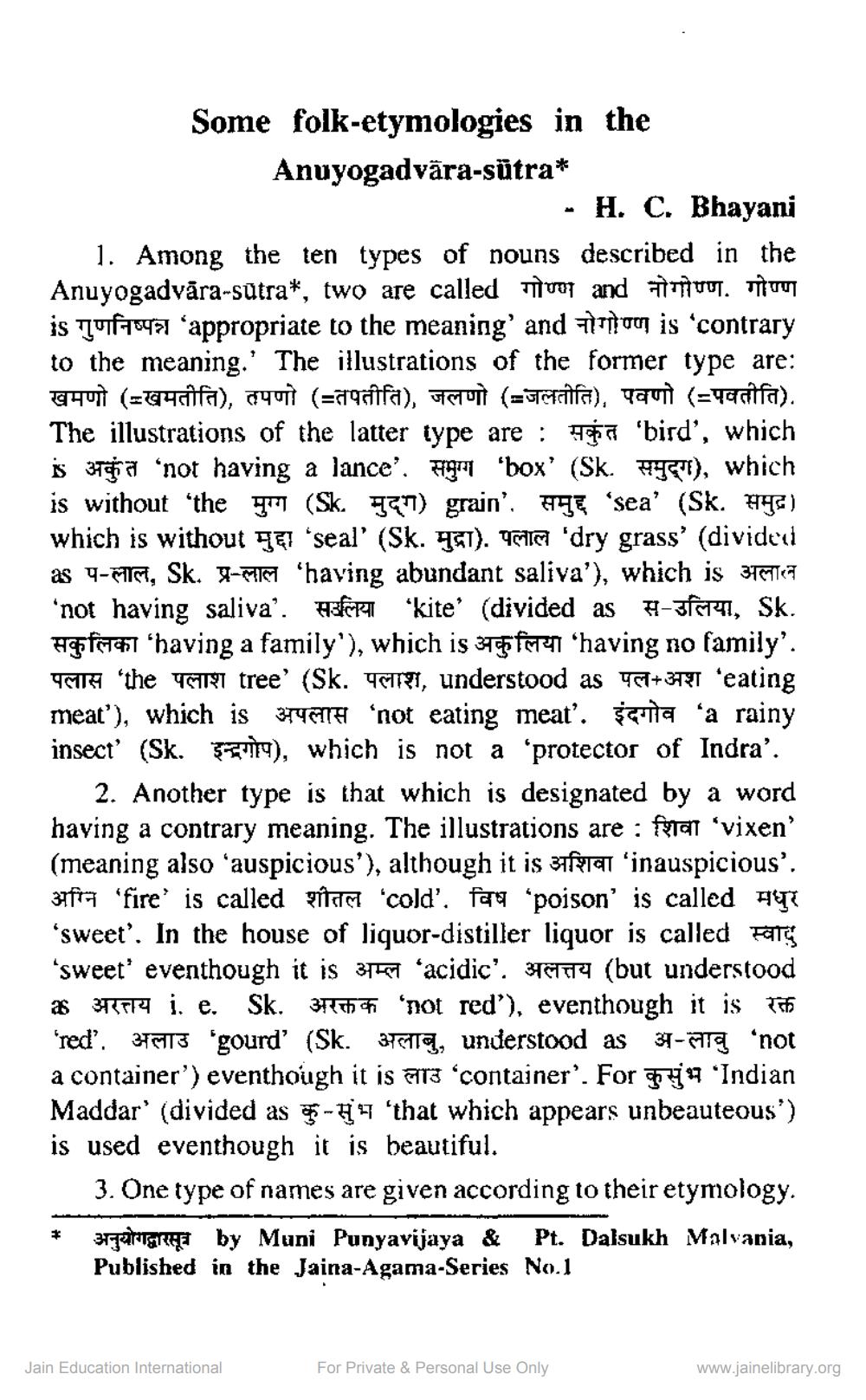________________
Some folk-etymologies in the Anuyogadvāra-sūtra*
- H. C. Bhayani 1. Among the ten types of nouns described in the Anuyogadvāra-sutra*, two are called गोण्ण and नोगोण्ण. गोण्ण is quif29991 appropriate to the meaning and indoo is 'contrary to the meaning.' The illustrations of the former type are: G44 (=648fat), 2441 (=waitfa), Hmon (=emailfa), Taunt (=yedfa). The illustrations of the latter type are : a 'bird', which s अकुंत 'not having a lance'. समुग्ग 'box' (Sk. समुद्ग), which is without the मुग्ग (Sk. मुद्ग) grain'. समुद्द 'sea' (Sk. समुद्र) which is without yg 'seal' (Sk. 481). Yn 'dry grass' (divided as 4-rt, Sk. #-M61 'having abundant saliva'), which is stellen 'not having saliva'. Hifcren "kite' (divided as 4-31674, Sk. Hf441 having a family'), which is he fet having no family'. पलास 'the पलाश tree' (Sk. पलाश, understood as पल+अश 'eating meat'), which is 37461H ‘not eating meat'. $na a rainy insect' (Sk. 9), which is not a 'protector of Indra'.
2. Another type is that which is designated by a word having a contrary meaning. The illustrations are : ftat 'vixen' (meaning also 'auspicious'), although it is 37 ta 'inauspicious'. अग्नि 'fire' is called शीतल 'cold'. विष 'poison' is called मधुर 'sweet'. In the house of liquor-distiller liquor is called Farg 'sweet' eventhough it is 3757 'acidic'. 3761714 (but understood a 372719 i. e. Sk. 34th of 'not red'), eventhough it is Taha 'red'. 37613 'gourd' (Sk. 3911, understood as 31-971 'not a container') eventhough it is atz'container'. For 19 Indian Maddar' (divided as 5-14 that which appears unbeauteous) is used eventhough it is beautiful.
3. One type of names are given according to their etymology. * Branean by Muni Punyavijaya & Pt. Dalsukh Malvania,
Published in the Jaina-Agama-Series No.1
Jain Education International
For Private & Personal Use Only
www.jainelibrary.org




